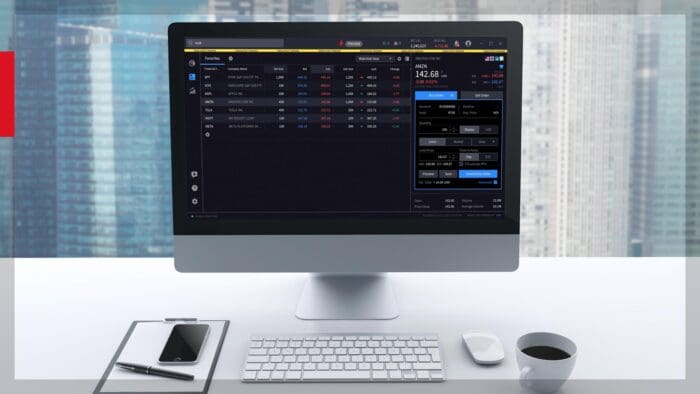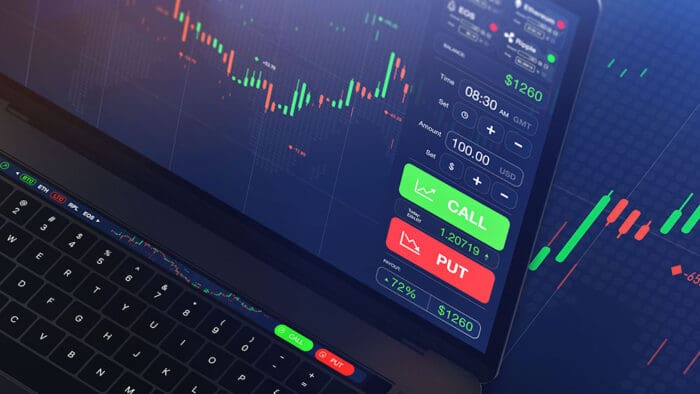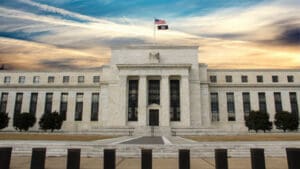This morning’s weak nonfarm payrolls report has market participants scratching their heads asking themselves why the Fed didn’t cut on Wednesday. Stocks are getting absolutely creamed against the backdrop of a sizeable miss amidst heavy downward revisions to May and June which brought the average monthly job gain to just 35k over the past 3. Indeed, June featured the lightest headline number since the pandemic year of 2020 and May offered the second-lowest during the time period. And a separate publication from ISM depicting the deepest level of manufacturing contraction going back to October is also raising slowdown fears. Meanwhile, today is tariff day and dozens of nations are experiencing pricier import levies on products sent to the US. Some of the numbers are staggering and much higher than 20%, but the mean figure remains around 15%. In trading action, the fixed-income complex is demanding rate cuts as the yield curve plunges in bull-steepening fashion led by the front-end. Additionally, equities overall, the greenback, cyclical commodities and bitcoin are facing losses. Conversely, shares in the defensive consumer staples, healthcare and utilities sectors are catching bids, while the gold and silver metals, forecast contracts and volatility protection instruments are seeing buying interest.
Huge Downward Revisions
The US economy added 73,000 jobs in July while the June and May months were revised lower by a total of 258,000 to just 19,000 and 14,000. Last month’s figure missed the median estimate of 110,000 and featured broad-based weakness. Roster additions were led by the non-cyclical private education/health services sector which boosted headcounts by 79,000 and then retail and financial activities climbing 16,000 and 15,000. But of the other 4 major segments that carried a positive sign, none were over 5,000. On the other hand, 7 of the major components saw reductions in workers, with professional/business services, manufacturing, government, wholesale trade, mining, information and utilities trimming by 14,000, 11,000, 10,000, 8,000, 4,000, 2,000 and 1,000.
Immigration Restriction Caps Progress
The sluggish pace of hiring brought the unemployment rate up to 4.2% from 4.1%, as expected, and there are signs that immigration restrictiveness is weighing on the participation rate which fell to 62.2%, its lowest level since November of 2022. Weaker participation is a negative for productivity and GDP, capping headline nonfarm payrolls as well as the momentum of economic advancement. The inflationary aspects are more nuanced, however, as wage bills are bolstered by reduced labor supply while rental revenue prospects in housing decelerate. Indeed, paycheck growth did arrive stronger than estimated, with average hourly earnings expanding at 3.9% year over year (y/y), faster than the anticipation for an unchanged 3.8%. The 0.3% month over month (m/m) climb was also meaningful, arriving as projected while accelerating from 0.2% in the prior print.
Manufacturing and Real Estate Languish
Economic data from the rate sensitive areas of the economy also disappointed, with construction spending and the Institute for Supply Management’s (ISM) manufacturing gauge contracting during the months of June and July. The former print signaled another 0.4% drop which matched May and badly missed the expectation for 0%. The single-and multi-family segments drove the weakness there. Meanwhile, ISM’s Purchasing Managers’ Index retreated to 48 from 49, despite the median estimate of 49.5 standing closer to the expansion border of 50. New orders, exports, backlogs and employment were the greatest drags in the report. Prices and production expanded, however, but inflationary pressures did rise at a slower pace on a m/m basis as that aspect of the publication came in at 64.8 versus the prior period’s 69.7.
August and September Are Historically Weak
Seasonal trends in markets are important to analyze and a significant consideration is that today marks the beginning of what is typically a weak period for equities. The next two months tend to feature defensive attitudes followed by what is historically the best part of the calendar for stocks. Indeed, we saw a mean correction in August of 2024 but September was quite positive; it was granted a helping hand in the form of a 50-basis point trim to the fed funds rate. This Friday’s data was definitely on the bad side, but the good news is that similar to last year, it may motivate the continuation of the central bank’s easing cycle. Finally, during these times, investors are more likely to adopt the glass-half empty, rather than the half-full perspective, which fosters risk-off behavior.
International Roundup
EU Inflation Comes in a Little Hot
According to a flash estimate from Eurostat, the statistical office of the European Union, euro area annual inflation remained stable at 2.0% in July 2025, matching the previous month’s rate. The closely watched core inflation, which excludes volatile energy, food, alcohol, and tobacco prices, also remained unchanged at 2.3%. both results were 0.1% greater than forecasts. Among the main components, food, alcohol, and tobacco showed the highest annual rate in July at 3.3%, an increase from 3.1% in June. Services inflation, however, eased to 3.1% from 3.3% in June. Meanwhile, non-energy industrial goods saw a slight increase to 0.8% from 0.5% in June, and energy prices continued to decline, falling by 2.5% after a 2.6% drop in June.
Monthly overall inflation came in at 0%, softening from the 0.3% in the prior period.
Japan Unemployment Steady, Participation Up
According to data from the Ministry of Internal Affairs and Communications, Japan’s unemployment rate in June 2025 held at 2.5% for the fourth straight month, meeting market expectations. The number of unemployed individuals stayed at a three-month low of 1.72 million. While employment and the labor force saw slight declines, the non-seasonally adjusted labor force participation rate rose to 64.2%, its highest since June 1998. The jobs-to-applicants ratio, however, decreased to 1.22, missing the expected 1.25 and reaching its lowest point since March 2022.
South Korea Posts Record Exports
Despite the uncertainty surrounding trade and potential US tariffs, South Korea achieved a historic export performance in July, reaching its highest level ever for the month, according to the Ministry of Industry and Trade. Total exports surged to over $60 billion, reflecting a near 5.9% y/y increase, better than the expected 4.6%. This impressive growth was largely driven by robust demand for semiconductors, the country’s primary export, which exceeded $14 billion in shipments and experienced a nearly 33% y/y increase. Even as the US prepared to implement new tariffs starting August 1st, South Korean businesses made a concerted effort to maintain export momentum and secure favorable trade terms. Imports grew 0.7% y/y, lighter than the 2% expectation and the 4.3% from the previous month.
Australia PPI Arrives Below Estimates
According to the Australian Bureau of Statistics, Australia’s producer Price Index (PPI) for final demand saw a quarterly rise of 0.7% and an annual increase of 3.4% over the past twelve months. The 3-month rate missed the 0.9% expectation while the annual growth rate represents the slowest pace since the September quarter of 2021. Several sectors contributed to this movement, with property operators experiencing a quarterly increase of 1.1%, driven by rising rents and high demand for residential properties, though the pace of growth has slowed compared to the previous years. Other food product manufacturing also showed significant growth at 8.4%, boosted by strong international demand for items such as coffee and meat products. Conversely, petroleum refining prices experienced a decline of 9.0% due to lower crude oil prices. Overall, while final demand prices rose, the data suggests an easing of cost pressures within the production sector.
Singaporean Manufacturing Weakens
Singapore’s Manufacturing PMI registered 49.9 in July 2025, a slight decrease from 50.0 in June, signifying a return to contraction after a brief expansion, according to the Singapore Institute of Purchasing & Materials Management (SIPMM). This indicates a cautious sentiment among manufacturers due to the persistent uncertainty surrounding global trade policies and tariffs, leading many companies to delay investment and hiring plans. Conversely, the electronics sector, a major contributor to Singapore’s manufacturing output, saw its PMI increase slightly to 50.2 in July from 50.1 in June, marking a second consecutive month of expansion. This modest growth was propelled by increases in new orders, new exports, factory output, and input purchases within the electronics sector. While Singapore’s direct tariff rate on exports to the US is anticipated to remain at 10%, the trade-dependent economy faces indirect risks to its exports and overall economic health through its interconnectedness with key trading partners.
UK Home Prices Climb
UK house prices experienced a slight increase in July, according to the latest Nationwide House Price Index. The annual rate of growth accelerated to 2.4%, up from 2.1% in June. The average for a home now stands at £272,664, compared to £271,619 last month. On a monthly basis, prices rose by 0.6% after seasonal adjustment. This upward trend comes as the UK housing market has shown signs of improving affordability.
Disclosure: Interactive Brokers Affiliate
Information posted on IBKR Campus that is provided by third-parties does NOT constitute a recommendation that you should contract for the services of that third party. Third-party participants who contribute to IBKR Campus are independent of Interactive Brokers and Interactive Brokers does not make any representations or warranties concerning the services offered, their past or future performance, or the accuracy of the information provided by the third party. Past performance is no guarantee of future results.
This material is from IBKR Macroeconomics, an affiliate of Interactive Brokers LLC, and is being posted with its permission. The views expressed in this material are solely those of the author and/or IBKR Macroeconomics and Interactive Brokers is not endorsing or recommending any investment or trading discussed in the material. This material is not and should not be construed as an offer to buy or sell any security. It should not be construed as research or investment advice or a recommendation to buy, sell or hold any security or commodity. This material does not and is not intended to take into account the particular financial conditions, investment objectives or requirements of individual customers. Before acting on this material, you should consider whether it is suitable for your particular circumstances and, as necessary, seek professional advice.
Disclosure: ETFs
Any discussion or mention of an ETF is not to be construed as recommendation, promotion or solicitation. All investors should review and consider associated investment risks, charges and expenses of the investment company or fund prior to investing. Before acting on this material, you should consider whether it is suitable for your particular circumstances and, as necessary, seek professional advice.
Disclosure: Futures Trading
Futures are not suitable for all investors. The amount you may lose may be greater than your initial investment. Before trading futures, please read the CFTC Risk Disclosure. A copy and additional information are available at the Warnings and Disclosures section of your local Interactive Brokers website.
Disclosure: Bonds
As with all investments, your capital is at risk.















Join The Conversation
If you have a general question, it may already be covered in our FAQs page. go to: IBKR Ireland FAQs or IBKR U.K. FAQs. If you have an account-specific question or concern, please reach out to Client Services: IBKR Ireland or IBKR U.K..
Visit IBKR U.K. Open an IBKR U.K. Account